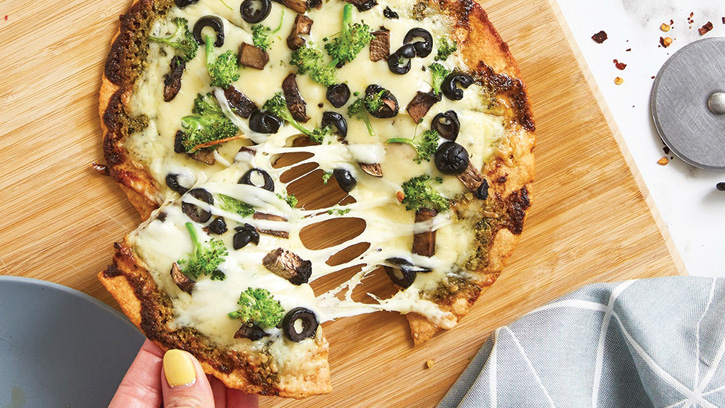Startup Makes Pizza Crust From Chicken
Startups & Innovators | INNOVATIONS
An entire category of frozen pizzas with crusts made from alternative ingredients has emerged over the last decade or so, relying on gluten-free inputs including ancient grains, sweet potatoes, and, especially, cauliflower.
But veteran product developer Omar Atia knew that innovators weren’t coming up with good chicken-based crusts, and his friend Mohamed Aly had made a great-tasting pizza crust out of chicken breasts that had the additional benefit of being keto-friendly.
Recognizing an untapped market niche, the two friends launched ZeroCarb LYFE in 2019 and haven’t looked back. The startup’s two flavors of premium-priced frozen pizzas on chicken-based crusts notched about $2 million in sales in 2022, and Atia projects revenues of $14 million in 2023 and $51 million the next year. A bevy of angel investors and venture capitalists have gathered around ZeroCarb LYFE like college students with the munchies, on their way to pledging $5 million so the company can expand with the partners’ ambitions.
“The product and the quality of the taste is honestly what closes the deal with everyone,” Atia says. “At first, people are shocked, because they’re thinking that it’s like one of the other [alternative-crust] products that doesn’t taste amazing.”
In fact, other companies have tried chicken-based crusts, including one poultry producer, which introduced crusts made from chicken, egg whites, and cheese in 2020, but apparently has discontinued them.
Personal Inspiration
Like many food startups, ZeroCarb LYFE relies on a prod from the personal health experience of a founder. The inspiration for ZeroCarb LYFE was Aly’s diabetes. More than a decade ago, Aly, a former restaurant owner, had come up with his own recipe for a pizza crust that would keep his blood sugar in check by relying on only four ingredients: chicken, olive oil, salt, and spices.
Building ZeroCarb LYFE into a business enterprise fell to Atia, who had been an R&D specialist at Kraft and Conagra. Aly had created a small business supplying his crusts to local restaurants, but he wasn’t able to scale it. Atia recognized the product’s potential and brought his industry expertise and experience to bear on the venture.
There were two keys to formulating and making the crusts. “My first question [to Aly] was, ‘What binder are you using?’” Atia recalls. “And he said, ‘There’s no binder.’ I thought he didn’t understand my question because he wasn’t a food scientist. But there was no binder.”
Atia is reticent to explain how the mere four ingredients in ZeroCarb LYFE crusts hold together but describes the recipe processing as the second crucial step. “It depends on the way we process and form and cook the chicken in a unique sequence,” he says. “And after it’s frozen, the crust dehydrates further in the baking process and comes out crispy like a thin-crust pizza.”
Yet ZeroCarb LYFE crusts bear no chicken-y taste, Atia attests. “How it tastes on your tongue is about distribution of fat and about mouthfeel,” he says. “It only tastes like chicken if the toppings are chicken,” as in the company’s first variety, Buffalo Chicken.
So far, Schnucks, a major supermarket chain based in St. Louis, has put ZeroCarb LYFE’s two varieties of 7.5-inch pizzas, Beef Crumble in addition to Buffalo Chicken, in its freezer cases at prices of $9.99 apiece, and shoppers can order a four-pack of the pizzas online for $59. Two new varieties on their way to shelves are Pepperoni and Beef Bacon Jalapeño flavors, the latter an account-specific variety that will be launched online and thereafter carried only by Sprouts markets.
Not surprisingly, Aly and Atia are pivoting to turn their basic command of chicken-based baked products to other categories. Already, consumers can buy the plain crusts on the company’s website.
ZeroCarb LYFE chips are slated to appear in stores later this year. “There will be a thicker version like a corn chip that you can dip in queso, and a thinner kind that will be competitive with potato chips and that niche,” Atia says.


